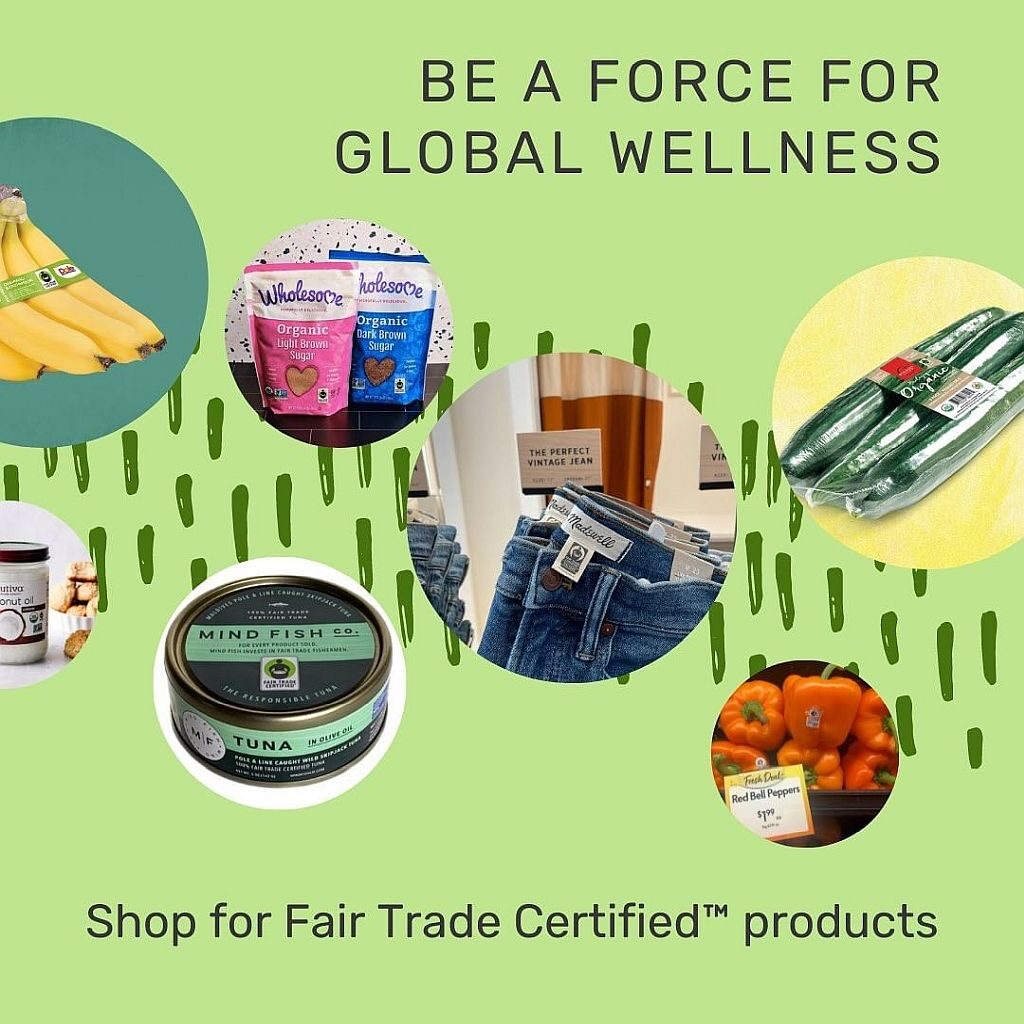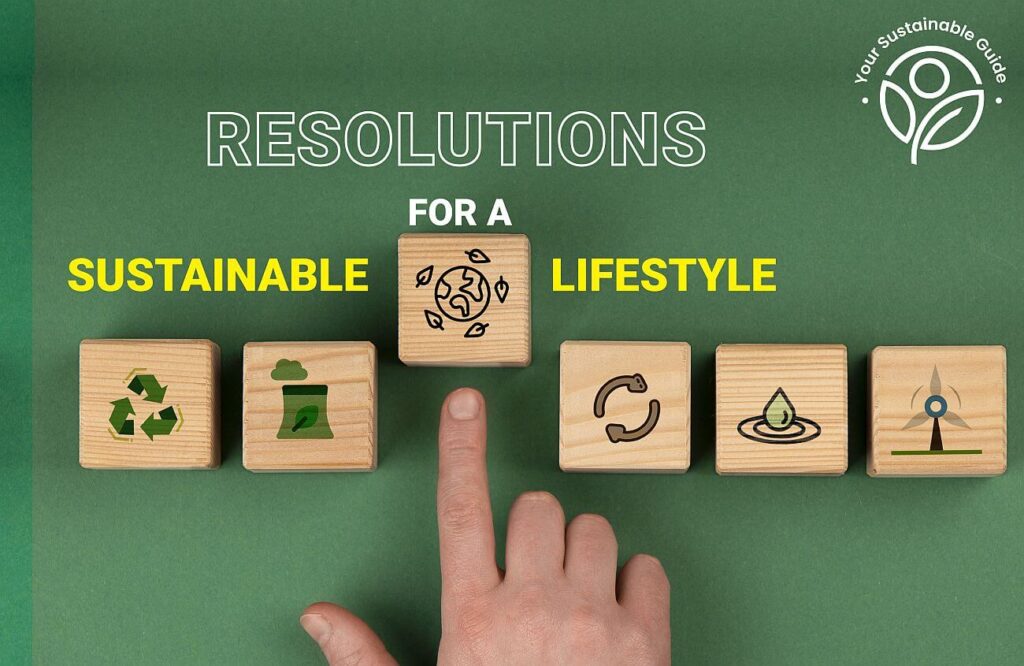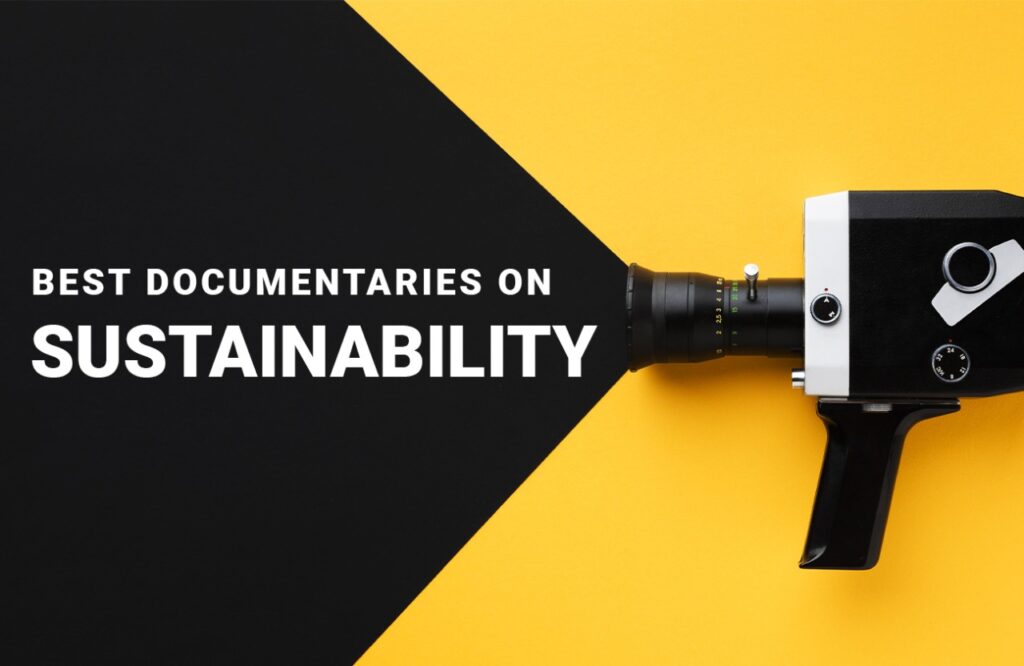The rising stats of the climate crisis calls for immediate practical rock-hard solutions. Not just from governments, industries and large corporations but also from the general public— From Us! While the idea of transitioning into an eco-conscious lifestyle may seem intense, the truth is that making a positive impact on our planet is within everyone’s reach. The key lies in adopting simple sustainability resolutions that are both actionable and accessible, regardless of the time of year.
The beauty of these practices lies in their simplicity and ease of implementation, allowing us to make a positive difference at any time, not just during the start of the year or on special environmental days. So, no more waiting, because now is the best time ever. Let’s embrace these simple resolutions for a sustainable lifestyle and embark on a journey towards a greener world, one step at a time.
Towards a Sustainable Lifestyle and Beyond…
Impact of Individual Actions on Sustainability
Every small choice we make, from the products we purchase to the way we utilize resources, contributes to the larger environmental picture. Simple actions like reducing single-use plastics, conserving energy, opting for sustainable transportation, and supporting local and eco-friendly businesses can collectively create a positive change. By being conscious consumers and making environmentally responsible choices, we can pave the way for a cleaner and more sustainable future for ourselves and generations to come.
Encouraging Long-term Commitment to Sustainable Living
Practising sustainability isn’t a fleeting affair that you can do to celebrate special occasions like Earth Day, World Ocean Day or World Environment Day. In fact, it is a journey that requires continuous effort and dedication towards embracing eco-friendly choices for life. It’s about adopting a mindset that values the planet’s well-being in every decision we make. With the integration of ecologically sound habits and sustainability resolutions into our daily lives, we can advocate for environmental initiatives and make a lasting impact.
Assessing Personal Values and Environmental Concerns
When it comes to leading a sustainable life, an essential step is reflecting on our personal values and environmental concerns. Take a moment to reflect on what truly matters to you and how it aligns with the health of our planet. Consider the impact of your actions and choices on the environment. Once you clearly understand your values, you can make rational decisions that contribute to a greener future. Whether it’s supporting ethical brands, cutting on your meat intake, or conserving resources, your individual actions have the power to create a chain of events, inspiring others to join the journey towards a more sustainable world.
Identifying Areas for Improvement in Daily Life
Taking a mindful approach to assessing our habits, daily routines, and consumption patterns helps to pinpoint areas where we can make constructive changes. It might be reducing food waste, preserving water and energy, using public transport options, or adopting conscious shopping habits. By being introspective and open to change, we can uncover opportunities to minimize our environmental impact. Small shifts in our daily choices can accumulate into significant strides towards a more responsible future.
Prioritizing Resolutions Based on Feasibility and Impact
Remember, sustainability is an ongoing commitment. So don’t go overboard with making shifts all at once. Rather than overwhelming yourselves with an extensive list of sustainability resolutions, focus on a few key areas where you think your efforts will have the greatest effect. By carefully selecting resolutions that align with your capabilities and lifestyle, you’ll be at a higher chance of success and maintain long-term dedication. It’s about finding that sweet spot where your actions can create tangible and meaningful change. So set realistic goals and celebrate each progress that you make.
20 Easy to Implement Resolutions for a Sustainable Lifestyle
1. Save Water

Embrace water conservation practices as one of your topmost resolutions for a sustainable lifestyle. You can begin with preserving this precious resource by turning off the tap while brushing your teeth or soaping your hands. Shorter showers can also make a significant impact, saving gallons of water per day. Install water-efficient fixtures, like low-flow showerheads and faucets, to reduce water consumption without sacrificing performance. Fix any leaks promptly, as even a small drip can waste a significant amount of water over time.
Now, for dirty utensils and clothes, only run the dishwasher and washing machine with full loads, as this maximizes efficiency. When watering plants or maintaining your garden, opt for efficient irrigation methods like drip systems or watering in the early morning or evening to minimize evaporation.
2. Set up Rainwater Harvesting System
Collecting rainwater is a good way to utilize a free and abundant resource. We can use this water for various purposes, such as gardening, washing utensils, and toilet flushing. This reduces the strain on freshwater sources, especially during dry periods or in regions facing water scarcity. Also, we can reduce our reliance on municipal water supplies and contribute to the conservation of freshwater resources. This not only conserves water but also reduces the strain on municipal water supplies.
Millions of people worldwide are suffering from water scarcity. So being conscious of water usage in our daily activities is extremely important. Plus, using rainwater for household or commercial needs can significantly reduce water bills, leading to cost savings over time.
3. Become Energy-Efficient
Incorporating energy conservation ideas for our home is not only good for the environment but also for our wallets. Consider implementing this sustainability resolution by reducing your carbon footprint by switching to energy-efficient devices, such as LED lights, Energy Star-certified home appliances, Induction cooktops, and so on. Adopting habits like adjusting thermostats, using natural light whenever possible, and optimizing heating and cooling systems are some great ways of leading a low-impact lifestyle. You can also automate your home by switching to the latest systems and installing green power like solar panels on your roof.
4. Cut on Vampire Power
Vampire or Phantom power can contribute significantly to your overall electricity usage. So be mindful of eliminating it to save on energy consumption. It just means switching off your electronic devices when they’re not in use. Many appliances, such as televisions, computers, game consoles, and chargers, continue to draw power from the electrical outlet even when you’re not actively using them. This standby power consumption contributes to wasted electricity and increases energy bills. Unplugging devices or using smart power strips with an on/off switch can help to cut on vampire power.
5. Trim the Trash with Waste Reduction
A bagful of garbage every single day is concerning because it just indicates irresponsible resource consumption. Integrate measures for a zero-waste lifestyle. It involves being mindful of our consumption patterns and finding creative ways to reuse items instead of throwing them away. Always try to choose products with minimal packaging or opt for items that can be easily repurposed.
For managing your food waste, try meal planning. It is a life-saving approach that will not only sort out your day-to-day meals but will also help you to shop only for the food items you actually need, limiting excess purchases of perishable items. Whatever food waste you generate, consider composting them to reduce landfill burden while creating nutrient-rich soil for gardening.
6. Say Yes to Recycling

The landfills and oceans are filled with stuff that can be easily recycled and given a second life. So get recycling practices at work as one of your core sustainability resolutions. You can start by familiarizing yourself with local recycling guidelines to understand what materials are accepted and how they should be sorted. Set up dedicated recycling bins in your home to make it easy and convenient to separate recyclables from regular waste. And yes, don’t forget to rinse out containers before recycling to avoid contamination. For cardboard boxes— just flatten them to save space and maximize recycling efficiency.
Now, single-use plastics have to go. Because the rising plastic waste pollution has been choking our planet. Literally! So swap to reusable water bottles, reusable shopping bags, glass or stainless steel food containers and reusable straws that you can use throughout the year and more. Bonus point— You will no longer consume toxins that are an inevitable part of plastic products, and leech into your food or water. Meaning clean eating!
7. Choose Sustainable Transportation
Every time you venture out, you don’t need to take out your car. Instead, opt for alternative modes of transportation like biking or walking for short distances. Not only is it a great way to stay active and improve your health, but it also decreases carbon emissions and saves money on fuel. Plus, you might discover hidden gems in your neighborhood along the way.
Using public transportation should be your way to travel around for longer distances. It is convenient and helps traffic congestion and air pollution at check. Hop on a bus, train, or subway to contribute to cleaner and more efficient urban mobility. For everyday workplace commutes, you can also opt for carpooling and ride-sharing options by coordinating rides with colleagues, friends, or neighbors.
If you’re in the market for a new vehicle, consider purchasing electric or hybrid cars. They are increasingly accessible, emit fewer greenhouse gases, and help to reduce our dependence on fossil fuels.
8. Consume Local or Organic Food Products
You are what you eat! And news of pesticides and other toxic residues in conventionally grown food products are flooding the internet. So choose food products like organic tea brands, non toxic coffee and more daily need products to choose from, whenever possible, as they are cultivated without harmful pesticides and chemicals, promoting healthier ecosystems and safeguarding biodiversity. Organic farming practices prioritize soil health and conservation, benefiting both the environment and our own health.
And nothing beats shopping for local produce. Fruits and vegetables native to our place are packed with benefits that boost our immunity. Plus, by opting for locally sourced produce, you can reduce the carbon footprint associated with long-distance transportation and support local economies. Visit farmers’ markets or join community-supported agriculture programs to connect directly with local farmers and access fresh, seasonal produce.
9. Reduce Your Meat Intake or Go Vegan
The meat production industry is horrifying. It’s not just about being cruel to animals, but the meat you love to relish on or prefer consuming for your protein intake is highly contaminated with hormonal synthetics and a range of chemicals. And let’s not forget the immense level of greenhouse gas emissions generated by raising livestock. So for your own good and that of the planet, consider reducing your meat intake and focus on nourishing yourself with plant-based meals.
Go easy! Begin this journey by reading vegan blogs, listening to some best vegan podcasts or checking out vegan documentaries on Netflix, Hulu or Amazon Prime. Incorporate Meatless Mondays or choosing plant-based alternatives for your favorite dishes. Explore the wide variety of delicious and nutritious plant-based recipes available, from hearty grain bowls to mouthwatering veggie burgers; you can literally have everything, without harming anyone. There is an abundance of plant-based proteins like legumes, tofu, and tempeh that provide essential nutrients without the environmental impact associated with meat production.
10. Eat Home-cooked Meals
Yes, eating at restaurants or grabbing takeaway meals are convenient. But these food habits are neither healthy for you nor for the planet. Sustainability can start right in our kitchens by choosing to cook in non toxic dinnerware and enjoy home-cooked spreads more often. By cooking at home, you can have more control over the portions, which helps minimize food waste while giving you balanced nutrition. You can plan meals based on the ingredients you already have, making use of leftovers and reducing the need to throw away excess food.
Additionally, when you curate your own menu, you have the opportunity to select locally sourced, seasonal, and organic ingredients. You have the chance to support local farmers who choose sustainable farming practices. And together, we can contribute to a healthier environment and lower our carbon footprint. Preparing meals at home allows you to control the ingredients you use, promoting healthier eating habits. You can incorporate more whole foods, fresh produce, and reduce the consumption of processed foods that are often packaged in unsustainable materials.
11. Cultivate Your Own Garden
What’s better than growing your own food? Because this gives you full control of what’s actually going on your plate. Cultivating our own garden is a delightful and rewarding way to connect with nature while promoting self-sufficiency, and making a positive impact on the environment. By growing our own fruits, vegetables, and herbs, you can experience the joy of harvesting fresh, organic produce right from your backyard. And, as a starting point, you don’t need to plough your entire garden space.
Start small by planting herbs on containers on your balcony or window sill. Even a vertical garden in your kitchen area next to the window sounds great. Choose a variety of plants that thrive in your climate and consider incorporating native species to support local ecosystems. Cultivating our own garden reduces the need for long-distance transportation and excessive packaging associated with store-bought produce. It promotes biodiversity, attracts pollinators, and contributes to healthier soil and air quality. From the simple pleasure of picking a ripe tomato to the satisfaction of creating a vibrant green oasis— Enjoy the joys of gardening!
12. Embrace Conscious Fashion Choices
Slow down and appreciate the value of well-made, timeless clothes. Start by curating a capsule wardrobe of high-quality versatile pieces that surpass trends, ensuring longevity and reducing the need for frequent additions. Seek out sustainable fashion brands that prioritize ethical sourcing, fair labor practices, and environmentally friendly materials.
If you’re confused about their authenticity, then look for certifications like Fair Trade, B Corporation, Certified organic raw materials, or other eco-friendly practices to confirm your clothing has a positive social and environmental impact. Challenge the culture of fast fashion by resisting impulse buys and focusing on intentional purchases as sustainable alternatives. And, of course, extend the lifespan of your garments by learning basic repair skills like sewing buttons, fixing seams, or patching holes.
13. Shop Vintage or Second-hand
Shopping vintage or second-hand is like embarking on a treasure hunt. Like, literally! So consider thrifting!! Check out your local thrift stores, consignment shops, flea markets, or online shopping platforms dedicated to vintage and second-hand fashion. These spaces hold a vast array of unique clothing, accessories, and home décor items that add character and individuality to your style. The best thing is by choosing pre-loved articles, you divert them from landfills and give them a new lease on life. This conscious choice helps minimize the environmental impact of the fashion industry, where garments often end up discarded after limited use.
Shopping second-hand contributes to a sustainable and circular economy as it reduces the need for new production and preserves valuable resources. Plus, vintage or pre-loved item offer incredible value for your money. You can find high-quality, designer pieces at a fraction of their original cost, allowing you to build a one-of-a-kind wardrobe without breaking the bank. What a steal!
14. Quit Using Paper Towels
Ditching paper towels might seem like a small change, but in the broader context, billions of paper towels make their way to garbage bins every day, worldwide, polluting the planet. We often reach for a paper towel out of habit, but with a little mindfulness, we can break this cycle. Swap out single-use paper towels for reusable options like cloth towels, washable wipes, or microfiber clothes. These alternatives are not only more sustainable but also more cost-effective in the long run.
Choose high-quality cloth towels that are absorbent and durable. They can handle a wide range of cleaning tasks, from wiping spills to drying dishes, and can be washed and reused many times over. As a matter of fact, you can also repurpose your old T-shirts, and worn-out bath towels as cleaning rags or use cloth napkins instead of paper ones during meals.
15. Purchase Fair Trade Products

One powerful sustainability resolution you can make to aid the welfare of the planet is by picking sustainable and fair-trade products. These cover everyday consumer goods such as clothing, grocery items, home furnishings, décor, and everything in between. Seek out locally made or grown products that support the local economy and reduce carbon emissions from long-distance shipping. These unique, handmade items often come with their own stories, native to your region and add a personal touch to our lives.
To ensure accountability, look for accreditations like Fairtrade, Rainforest Alliance, or Certified Organic that guarantee the product was produced with social and environmental responsibility in mind. These certifications ensure fair wages, safe working conditions, and sustainable practices. Learn about the impact of your purchasing choices and try to understand how your values align with the brands or communities you support. And above all, choose items that are built to last, made from eco-friendly materials, and have minimal packaging to reduce excessive waste.
16. Donate Your Old Stuff
If your house is filled with items you no longer use, then it’s time to dispose of them— responsibly. Consider donating your old belongings to those in need, rather than letting them gather dust or end up in landfills. When we donate our unused stuff, we give them a chance to second life and be appreciated by someone else. This extends the lifespan of the item and reduces the demand for new production, which saves resources and energy. Another plus point, letting go of unused items helps us declutter our living spaces and lead a more minimalist lifestyle.
Moreover, by donating clothes, furniture, electronics, and other goods, we can directly support individuals and communities facing financial hardships. Our contributions can make a difference in their lives, providing them with essential items and a sense of hope. While it’s best to do this act towards helping destitute people around your neighbourhood, you can also donate to charities and NGOs that have access to larger groups of underprivileged communities. These organizations often rely on donated items to generate funds for their initiatives, enabling them to make a broader impact in areas such as education, healthcare, and social services.
17. Donate to Worthy Environmental Organizations
You can make a tangible impact on the planet and support the causes you believe in by making donations. And no, it doesn’t have to hurt your pocket. Remember, every donation, no matter the size, can have a significant impact. Whether you choose to support local conservation groups, international climate organizations, or research institutions, your contribution matters.
Donations provide crucial financial resources that enable non-profit environmental and social organizations to carry out their work effectively. These groups have the expertise and knowledge needed to tackle complex environmental issues. As a result, they often spearhead innovative solutions and research to address pressing sustainability challenges. By donating to such projects, you can become a catalyst for innovation, supporting the development of eco-friendly technologies, practices, and policies.
18. Volunteer
While making donations towards recognized environmental and social organizations is a great resolution for sustainability, it is not always an option for people with limited resources. But that doesn’t mean you can’t be a part of the bigger change. If you can’t spend money, consider spending your time volunteering at initiatives that matter to you. Whether it’s restoring natural habitats, raising awareness on recycling, joining plantation drives, advocating for sustainable practices, or supporting social justice programs, our time and skills can make a real difference.
Volunteering brings like-minded individuals together, creating a sense of community and shared purpose. It’s an opportunity to connect with passionate individuals who inspire and support one another on the journey towards sustainability. Participating in volunteer work exposes you to new perspectives, knowledge, and experiences. And you can learn more about the pressing environmental and social issues, gain valuable skills, and develop a deeper understanding of sustainability principles.
19. Take Good Care of What You Own
Make a sustainability resolution of taking good care of the things you already own. It’s about cherishing all of your belongings, whether it’s garments, electronics, furniture, dinnerware, or other items, and making them last longer. This can be done by following simple actions like regular cleaning, storage in appropriate conditions, and handling items with care to prevent unnecessary wear and tear. You can also learn basic repair and maintenance skills to fix minor issues yourself. It can be as basic as fastening a button, fixing a loose screw, or troubleshooting electronics.
Incorporating a Do-It-Yourself attitude not only saves money but also fosters a sense of self-reliance and resourcefulness. When we invest time and effort into maintaining our possessions, we develop a deeper appreciation for their value. We become more careful of our consumption habits and develop a stronger connection with the things we own.
20. Think Twice Before Buying New Items
Remember, Less is More! Every time you feel like buying anything, ask yourself: “Do I really need this? Will it bring long-term value and joy? Is it worth it?” Go forward with your purchase only if you answer a solid yes to all these three questions. Buying less stuff means generating less waste. From packaging materials to discarded products, our consumer culture contributes to an alarming amount of waste. But choosing quality over quantity and making intentional purchases can guide us in minimizing our ecological footprint and preserving valuable resources.
Many products we buy come at a hidden cost to the environment and exploited labor. By buying less, you can practice a minimalist approach and create a balance in soaring demands. This approach allows you to find contentment in a simpler lifestyle. It frees up space, reduces clutter, and encourages you to prioritize experiences and relationships over material possessions. And let’s not forget; your bank account will love this practice a bit extra.
Concluding Thoughts…
As we wrap up on the importance of sustainable resolutions, one thing becomes abundantly clear— every individual has the power to make a difference. Each small step we take, adds up to create a collective effect that can transform our planet. So, let us lead the example of embracing sustainability resolutions and celebrating the progress we make. Together, we have the ability to shape a world that thrives on harmony with nature, social equity, and a sustainable way of life. The time for action is now! Let’s inspire, ignite change, and pave the way for a truly sustainable future!







